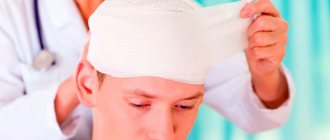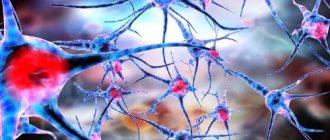Critical days are a difficult period in the life of every woman. It is accompanied by changes in hormonal levels and a number of specific symptoms, from nausea and breast tenderness to pain in the lower abdomen.
Depending on the intensity and frequency, pain during menstruation can be a variation of the norm. However, this is often due to the presence of any violations of the girl’s reproductive system.
It is very difficult to understand on your own why your stomach hurts during menstruation, and the lack of proper treatment can lead to serious problems. Therefore, with this symptom, it is better to immediately contact a gynecologist at the clinic for qualified medical help.
Classification of dysmenorrhea
The answer to the question of why your stomach hurts during menstruation can be answered by a gynecologist. Scientifically, this condition is referred to as dysmenorrhea. Two types of dysmenorrhea can be distinguished depending on the reasons that caused it:
- Primary. This diagnosis is made if the reason why the lower abdomen hurts during menstruation is clearly unknown. In this case, we can often talk about the hereditary nature of the disease. It also affects girls under the age of 25, smokers and those whose first menstruation occurs later than normal. Usually the problem disappears completely with the onset of sexual activity or after the birth of a child.
- Secondary. This type of dysmenorrhea most often occurs in women over 30 years of age and is associated with a gynecological disease and/or previous surgery.
Depending on the severity, three degrees can be distinguished:
- Mild - moderate stomach pain during menstruation, but the woman is able to tolerate these sensations and continues to lead her usual lifestyle;
- Moderate - painful periods, accompanied by weakness, nausea, weakness, and unstable emotional state.
- Severe - unbearably severe pain during menstruation, incapacitating. Accompanied by vomiting, serious malaise, including loss of consciousness.
Nausea, vomiting in women (including during pregnancy)
Nausea and vomiting, along with a throbbing headache, depressed mood, increased sweating and numbness of the hands, characterize the cephalgic form of premenstrual syndrome (PMS).
At the same time, blood pressure remains within normal limits. Unpleasant symptoms occur 2-10 days before menstrual bleeding in women with irregular cycles, a history of abortion or depression. Considering that the nervous system in women is more excitable than in men, nausea and vomiting during menstruation can be triggered by any unpleasant odor. Often, prolonged nausea without vomiting in women is a consequence of following a strict diet for a long time. The use of dubious food additives, a lack of essential microelements and vitamins, and the abuse of laxatives leads to chronic stress and disruption of the digestive tract. In addition to this, dysbacteriosis develops. The feeling of nausea goes away only after the intestinal microflora is normalized.
Nausea for no apparent reason is often the first sign of pregnancy. The unpleasant sensation is associated with a sharp increase in the level of the hCG hormone. Further hormonal changes in the female body, changes in metabolism and psychological stress often provoke vomiting 1-2 times a day, more often in the morning. The state of health returns to normal by the 13th week of pregnancy.
Early toxicosis (before 16-18 weeks of pregnancy)
- Mild degree - vomiting up to 5 times a day, the condition of the pregnant woman is satisfactory, the fetus is not in danger.
- Early toxicosis of moderate severity - vomiting up to 10 times a day, weight loss up to 3 kg, rapid pulse (up to 100 beats/min), acetone in the urine.
- Excessive vomiting of pregnancy (grade three) - vomiting up to 25 times a day, weight loss of more than 5%, dehydration and electrolyte imbalance. Immediate medical intervention is required.
Important! Severe vomiting in early pregnancy may indicate a hydatidiform mole.
Regularly occurring nausea and vomiting in late pregnancy makes one suspect the development of preeclampsia, the third stage of late toxicosis (preeclampsia). This condition is preceded by the appearance of swelling of the limbs and face (stage 1), increased a/d and protein in the urine (nephropathy, stage 2 of gestosis). Without timely treatment of preeclampsia, seizures (eclampsia) develop and the risk of stroke is high. For the fetus, late toxicosis is fraught with hypoxia, delayed development and perinatal pathologies. There is a high risk of placental abruption and premature birth.
Important! Nausea and vomiting in a pregnant woman can also be caused by taking iron supplements to treat anemia, common gastroenteritis, or another disease.
Causes of severe abdominal pain during menstruation
In order to understand how to relieve pain during menstruation, you need to identify the true cause of these sensations.
With primary dysmenorrhea, there are no pathological changes in the genital organs.
The reason is that a woman’s body produces powerful hormone-like substances - prostaglandins.
During menstruation, their content increases sharply, resulting in pronounced spastic contractions of muscles and arteries in the uterus. Because of this, toxic metabolic products accumulate in the uterus, which irritate the nerve endings, causing severe pain.
Since the uterus is located in the pelvis and is close to the ovaries, bladder, and intestines, pain sensations are transmitted along the nerve endings to these organs.
In secondary dysmenorrhea, pain is associated with the presence of gynecological diseases, the most common of which are:
- endometriosis;
- inflammatory diseases of the pelvic organs;
- uterine fibroids;
- adhesive disease of the peritoneum;
- varicose veins of the small pelvis;
- ovarian cysts and tumors;
- inflammation of the urinary system;
- intestinal diseases.
Another number of reasons may not be associated with gynecological disorders at all. After all, in the lower abdomen there are the intestines, ureters, peritoneum and other organs that can also provoke such a symptom.
Therefore, during the gynecological examination, consultation with doctors of related specialties may be necessary. Perhaps, in order to understand how to get rid of pain during menstruation, you will have to undergo a comprehensive examination of the body.
Nausea and vomiting in children
Frequent regurgitation of infants in most cases is caused by gastroesophageal reflux (reflux of food into the esophagus due to incompetence of the lower sphincter). However, this condition has nothing to do with vomiting. A one-time gag reflex against the background of a normal general condition also does not require special attention. Repeated vomiting in a newborn often indicates illness.
- Pyloric stenosis (manifests at 3-12 weeks) - vomiting “fountain” soon after finishing feeding. Unlike systemic diseases, vomiting with pyloric stenosis does not contain bile, and the baby sucks the breast with appetite.
- Intestinal obstruction - occurs due to intestinal atresia, obstruction of the ileum by extremely viscous meconium (meconium ileus), volvulus, or intestinal stenosis. From the first days the baby suffers from vomiting, and the general condition rapidly deteriorates.
- Intussusception (3-36 months) - often caused by viral enteritis and leads to intestinal obstruction. Attacks of severe abdominal colic and vomiting every 15-20 minutes lead to ischemia of the intestinal area, gangrene and perforation.
Nausea and vomiting in a child can be caused by unusual foods, nervous stress and various odors.
The main causes of vomiting in older children:
- viral/bacterial gastroenteritis - often occurs with diarrhea and fever;
- influenza, acute respiratory infections, childhood infections (for example, scarlet fever) - against the background of a high temperature, the child often develops vomiting and convulsions are possible;
- helminthic infestation - the child complains of nausea without vomiting, the parents note that the child has bad breath, rumbling in the stomach, itching in the anus and grinding of teeth at night;
- errors in nutrition - too fatty, spicy or fried foods provoke nausea, diarrhea and sometimes vomiting without fever;
- appendicitis - pain can begin in the stomach, near the navel or lower in the right side, the child becomes lethargic and drowsy, any painkillers for abdominal pain are strictly prohibited;
- poisoning with drugs and household chemicals - often causes an extremely serious condition, the symptoms depend on the toxic substance;
- sunstroke (heatstroke) - when overheated, the body temperature rises to 40ºC, the skin turns red and sweats significantly, nausea/vomiting and headache occur, breathing and heart rate increase;
- taking antibiotics almost always provokes intestinal dysbiosis (feeling of nausea after eating without vomiting, loss of appetite, constipation/diarrhea). To maintain intestinal microflora, antibacterial courses are combined with the intake of probiotics.
How to reduce pain
Even in the absence of pathologies, it is useful to know how to reduce pain during menstruation. After all, by following a number of simple recommendations, you can significantly reduce discomfort. If your lower back and stomach hurt before your period, you should:
- reduce the amount of stress;
- exclude heavy foods and foods that cause fermentation in the stomach;
- give up alcohol and smoking;
- maintain a good sleep schedule;
- diversify your diet with foods rich in calcium, magnesium, vitamins B and E;
- add moderate physical activity (yoga, gymnastics, etc.)
Treatment of the disease
In order to make a diagnosis, the doctor must exclude diseases of the genital organs.
First of all, it is necessary to collect an anamnesis and examine the patient in a gynecological chair. As additional diagnostic methods, a comprehensive ultrasound examination of the pelvic organs, examination of smears of vaginal discharge, cervical canal and urethra, and PCR diagnosis of sexually transmitted diseases are carried out.
Some patients may need to undergo hysteroscopy - examination of the uterine cavity using a special video camera.
To exclude diseases such as endometriosis, adhesive disease, etc., laparoscopy is sometimes performed - a minimally invasive procedure in which the doctor, using a camera and small punctures, can examine the abdominal cavity and identify the disease.
It is very important not to confuse pain relief with disease treatment. Many women believe that by taking antispasmodics, they will get rid of the problem.
However, the only correct answer to the question of what to do if your stomach hurts during menstruation is to seek medical help from a gynecologist.
The doctor at the private medical clinic “Doctor ANNA” will accurately determine the cause of the discomfort and will make every effort to eliminate it.
Menstrual pain - is this normal?
Normally, when the ovary hurts before menstruation, the discomfort cannot be too strong. The presence of mild, nagging pain indicates contractions of the muscles of the uterus, which strives to get rid of the “old” layer of the endometrium.
Over the next month, a “new” endometrium is formed, which is necessary for the embryo to attach to it in the event of fertilization.
In the case when the symptoms of menstruation are too pronounced, the bleeding is excessively profuse, we can talk about the presence of the disease dysmenorrhea.
You should, without wasting time, make an appointment with a doctor and find a disorder in the woman’s body, which is indicated by the pain syndrome.
Treatment of menstrual pain by type of disease
The main goals of treatment are to eliminate pain, normalize the menstrual cycle, normalize the state of the autonomic system and eliminate organic causes of dysmenorrhea. The approach to therapy is developed for each woman individually, based on the primary disease.
- in case of endometriosis, surgical intervention is performed to eliminate foci of endometrial growth;
- in case of hormonal imbalance, it is necessary to take hormonal medications to correct the corresponding disorder;
- infectious and inflammatory processes are usually treated with antibiotics;
- when the pelvic veins are dilated, vasoconstrictor medications are prescribed;
- neoplasms in the pelvis require surgical removal with a biopsy to determine their benignity;
- adhesions in the pelvic organs are also removed through surgery.
Whatever the cause of the disturbing symptom, the doctor will try to solve the problem using conservative methods, and only if absolutely necessary will resort to surgery.
Specific features of nausea and vomiting
To identify the cause of poor health and assess the patient's condition, the duration of nausea and vomiting is important. Acute vomiting (1-2 days) is often caused by medications, infections, poisoning (such as alcohol), kidney damage, and diabetes. Chronic vomiting (more than 1 week) is characteristic of long-term gastrointestinal diseases and mental disorders.
Features of vomiting and nausea
- Vomiting immediately after eating is characteristic of stomach lesions. If the gag reflex occurs 2-3 hours after eating, pathology of the duodenum is possible.
- Nausea and vomiting of acid are observed with gastritis with increased secretion and stomach ulcers.
- Vomiting of bile (greenish-yellow color) is caused by pathology of the hepatobiliary system (liver, gallbladder) or pancreas.
- Bloody vomit (red or brown) indicates gastrointestinal bleeding.
- Vomiting mucus is characteristic of diseases of the respiratory system (smoker's bronchitis), which occurs with a debilitating cough. Patients with alcoholism often complain of foamy vomiting in the morning (on an empty stomach).
- Vomiting with fever indicates the infectious nature of the disease. With a viral infection, the temperature can reach 39-40ºС. Nausea, vomiting and temperature up to 37.5-37.8ºС are more typical for bacterial infections.
- Vomiting with diarrhea/constipation without fever suggests an intolerance or allergy to certain nutrients, such as lactose.
- Constant nausea without vomiting and fatigue often occur with hypothyroidism.
- Vomiting and pain in the upper abdomen makes it necessary to exclude myocardial infarction, but is more often associated with gastrointestinal pathology.
- Fecal vomiting (dark vomit with a characteristic smell of feces) occurs with intestinal obstruction, tumors, and gastrointestinal fistulas.
Is there a cure for menstrual pain?
Often women do not strive to get rid of pain, they heroically endure it, considering it the norm and getting used to this condition. Some of them take medications uncontrollably, which only aggravates the situation.
As a result, having gotten used to the pain, a woman may not feel how primary dysmenorrhea has turned into secondary, which can hide a number of gynecological diseases. Therefore, it is important to understand that severe discomfort during menstruation is not the norm.
Modern medicine can provide many ways to get rid of unpleasant sensations. However, it is important to identify the true cause and eliminate it, and not the consequence of the problem.
Memo for the patient
Every woman should know:
- You should not self-medicate, but seek help from a doctor if you have severe and regular headaches, as well as if there is a change in its nature and duration. Discomfort during the menstrual cycle and disruption of its flow are an important reason to consult a doctor, regardless of age.
- A healthy lifestyle and proper nutrition are the right decision. You can prevent the development of migraines by following a daily routine, regular walks before bed, maintaining physical activity, and getting enough sleep. In the diet, it is necessary to limit the consumption of “fast” carbohydrates, alcohol and foods that contribute to fluid retention in the body. Maintaining fluid balance is very important for women prone to headaches.
- For effective consultation with a neurologist (and other doctors), it is advisable to keep a diary of health observations, in which you should indicate not only the presence or absence of headaches, but also their intensity. Information about blood pressure, heart rate, and other indicators of well-being will not be superfluous.
- Follow all doctor's recommendations. These can be drugs of various effects, a therapeutic diet, maintenance therapy in the form of vitamin and mineral complexes. You should go for a therapeutic massage of the back and cervical-head region only on the recommendation of your attending physician.
At the Clinical Brain Institute, you can undergo a full examination to identify the causes of headaches during menstruation and prevent the occurrence of migraine attacks. We have highly qualified specialists and the most modern equipment. Our doctors will conduct an examination and prescribe effective treatment.










